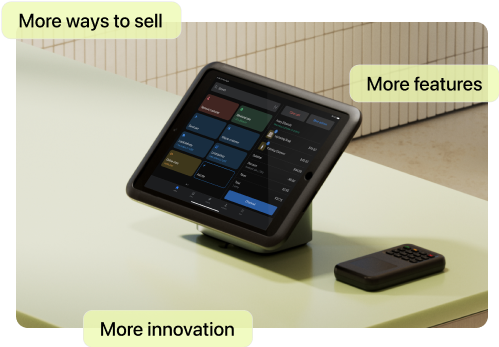Mark Parker, Nike’s former CEO, once said that “the biggest sources of opportunity are collaboration and partnership.” His quote highlights the importance of finding collaborators and partners to help you grow your business. But what is the best way to evaluate potential partners?
Whether you need to order raw materials for your manufacturing process or choose ecommerce software, sending out a request for more information can be a crucial step in deciding who you’re going to work with. A request for proposal (RFP) and a request for quote (RFQ) can help you evaluate potential vendors for your business.
Here’s how these request documents work, how they’re different, and how to use them to find the right vendor.
What is an RFP?
A request for proposal (RFP) is a document in which one business asks another to put together a formal proposal for a good or service. A company, manager, or procurement team can send a request for proposal to several vendors to compare them based on a wide range of evaluation criteria, including total price, technical capabilities, track record with metrics, and overall project approach. Vendors and suppliers fill out detailed RFPs to bid on complex and expensive projects.
RFPs can be long and time-consuming to create or respond to, so companies may begin their vendor selection process by sending request for information (RFI) documents first. RFIs are shorter documents that provide merchants with better information about how to develop useful RFPs and which businesses to send them to. For example, if a clothing ecommerce merchant needs a new app, they could send RFIs to several software development companies to find ones with experience in fashion. They could then develop and send an RFP, detailing their project, desired timeline, and budget.
What is an RFQ?
A request for quote (RFQ) is a document that a business sends to another business to receive a pricing quote for a specific product or service. Ecommerce merchants can use RFQs to find potential suppliers for products to sell online or start the manufacturer bidding process to produce a new product they’ve developed. Requesting a quote from a prospective vendor can help you choose a partner that covers your needs while staying within budget.
RFP vs. RFQ: What are the differences?
Request for proposal and request for quote documents have different functions, structures, and processes. Here’s a breakdown of the key differences:
Purpose
An RFQ is a document designed to start a competitive bidding process and find the best price for a product or service. By contrast, an RFP is intended to find the best partner for a complex project based on a variety of other factors, like timeline projections, delivery requirements, and overall project objectives.
The primary goal of an RFQ is to find cost savings by comparing pricing information from various vendors or suppliers, and the primary goal of an RFP is to solicit bids for a complicated project with a large budget to find the very best fit based on a variety of factors.
Structure
An RFQ document is a simple proposal structured around the specific goods, services, and payment terms required. RFPs are detailed proposals that involve many factors and a more complicated structure. For example, depending on the project, a request for proposal document could include a cover page, table of contents, company background information, project scope, proposal submission guidelines, and a terms and conditions section.
Process
RFPs are a more formal process than RFQs. The RFQ process can include basic information about products or services and a list of potential vendors. Once vendors receive an RFQ—depending on the complexity of the request—they could respond with a quote within a couple of days or weeks. By contrast, when a vendor receives an RFP, they may take several weeks or months to gather data from a variety of departments to put together a comprehensive proposal.
RFP vs. RFQ: How to decide which one to use
Since the RFP process requires a more structured and detailed document than an RFQ, it’s best for expensive and complex projects. For example, a business that needs a large-scale technology infrastructure upgrade could share a detailed request for proposal with various IT companies that can then provide in-depth bids on how they would handle such a significant project. You submit an RFP when you know you need help, but you’re not yet sure what the solution looks like—prospective partners can help you figure that out.
The primary evaluation factor for RFQs is the pricing quote, making it a good option for a commodity-style procurement process to find the best price for a specific good or raw material. For example, a dropshipping merchant selling clothing products could use RFQs to compare prices for jackets from different suppliers to identify the best price.
Since RFQs focus on pricing, they’re limited when it comes to evaluating services. For example, an ecommerce merchant searching for a marketing agency partner would need to use an RFP rather than an RFQ to make an informed vendor-based decision about which agency is a good fit based on company culture, process, and project scope.
RFP vs. RFQ FAQ
How do RFQ and RFP differ?
An RFQ, or request for quote, is a useful document for the purchasing process of goods or raw materials. An RFP, or request for proposal, is a better option for more complex projects with higher budgets, such as new infrastructure or a major technological upgrade.
What is RFI?
An RFI is a request for information document that businesses use to request basic information about other companies or their offerings.
How do you prepare RFP and RFQ?
To prepare an RFQ, put together a document that includes key information about your company, its operations, and a clearly defined product or service need that vendors can respond to with a pricing quote. RFPs take longer to prepare and might involve several departments since they include more detailed information like company background, project scope, and proposal submission guidelines.
Is an RFQ legally binding?
A request for quote is not a legally binding document. However, if you accept a company’s quote, the RFQ can become the basis for an agreement or contract going forward.







